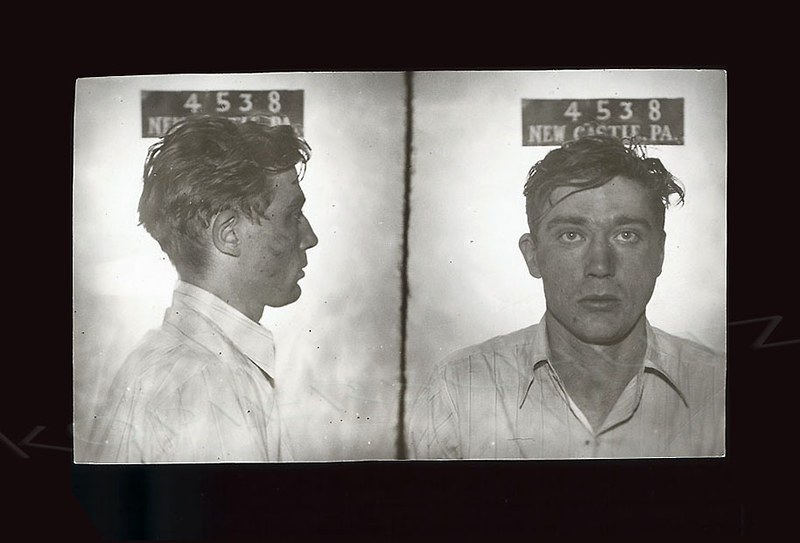This week’s top three summaries: R v Ndhlovu, 2022 SCC 38: #sex offender registry, R v Harris, 2022 ONCA 739: #absence of evidence, and R v KC, 2022 ONCA 738: 752.1 assessor appointment.
This week's top case deals with sentencing issues. For great general reference on the law of sentencing, I recommend the Emond title below. It is available for purchase now for our readership with a 10% discount code provided below. To purchase, simply click on image below.
R v Ndhlovu, 2022 SCC 38
[October 28, 2022] Charter s.7 Constitutionality: Overbreadth - Sex Offender Registry - [Reasons by Karakatsanis and Martin JJ, with Rowe, Kasirer and Jamal JJ. concurring and Wagner C.J., Moldaver, Cote, and Brown JJ. dissenting in part]
AUTHOR’S NOTE: Section 7 of the Charter protects us from laws that impact on our individual autonomy, dignity, and liberty in ways that are contrary to the fundamental principles of justice. Here, an overbreadth analysis of the sex offender registry provisions in the Criminal Code led the SCC to strike down the mandatory lifetime registration for multiple offenders (s.490.013(2.1)) and a 1-year suspended declaration of invalidity against mandatory registration for some offences (s.490.012). Here, particular attention was paid to the ongoing impacts of registration on people and the weak connection between lifetime registration and prevention of sexual offending (the purpose of the provisions).
Overview
[3] These two separate safeguards were removed in 2011 following the enactment of the Protecting Victims From Sex Offenders Act, S.C. 2010, c. 17. Instead, s. 490.012 of the Criminal Code now requires the mandatory registration of all offenders who have been found guilty of any one of the 27 different sexual offences designated in s. 490.011(1)(a). Now each and every such sexual offender is compelled to register their personal information on Canada’s national sex offender registry, regardless of their individual risk of reoffending. In addition to compulsory SOIRA orders, Parliament also imposed a mandatory lifetime registration for offenders who commit more than one offence, irrespective of the nature or timing of the offences and even if they are part of the same transaction (s. 490.013(2.1)).
[4] In this case, the appellant, Eugene Ndhlovu, pled guilty in 2015 to two counts of sexual assault against two complainants at a party in 2011. He was 19 years old at the time. At sentencing, the judge was tasked with tailoring a proportionate sentence that was fit in relation to both Mr. Ndhlovu and the sexual assaults he committed. After canvassing his background and the evidence, the judge found that Mr. Ndhlovu was unlikely to reoffend. However, due to Parliament’s amendments in 2011, the Criminal Code obliged the judge to issue an order requiring Mr. Ndhlovu to comply with SOIRA, and for the rest of his life.
[5] As a result, like all other such offenders, he would be required to report to a police station and forced to supply extensive personal information which would be placed on Canada’s national sex offender registry. SOIRA also imposes ongoing reporting requirements which are numerous, invasive and extensive; including that offenders must keep their information up to date, report their plans for any travel lasting seven or more consecutive days and report any change to their home or employment address. He would have to report annually to the police and be subject to random police checks. Non-compliance with any of the reporting obligations associated with registration carries the threat of prosecution, a maximum of two years’ imprisonment, a fine, or both (Criminal Code, s. 490.031(1)). His presence in the database would mean he would be among the list of persons police may consider to be of interest in their investigations, which may generate further interactions with the police. The impact on Mr. Ndhlovu and anyone subject to these provisions is considerable. The scope of the personal information registered, the frequency at which offenders are required to 2022 SCC 38 (CanLII) update their information, the ongoing monitoring by the state, and the threat of prosecution and imprisonment all interfere with what it means to be free in Canada.
[7] Even when Parliament acts with a laudable purpose, it must still legislate in a constitutional manner and comply with the Charter. It failed to do so when it enacted ss. 490.012 and 490.013(2.1). These measures infringe the liberty interest under s. 7 of the Charter because registration has a serious impact on the freedom of movement and on the freedom to make fundamental choices of people who are not at an increased risk of reoffending over their lifetime.
[8] Because the mandatory registration of those offenders who are not at an increased risk of reoffending does not assist police, it is inconsistent with the principle of fundamental justice against overbreadth. Mandatory and lifetime registration overshoot the mark: subjecting sex offenders who do not have an increased risk of reoffending to obligatory reporting requirements is not connected to Parliament’s 2022 SCC 38 (CanLII) purpose of capturing information that assists police prevent and investigate sex offences. Requiring lifetime registration also goes too far and denies the rights of some individuals in a way that bears no relation to Parliament’s objective.
[9] There are offenders who, because of their individual characteristics, are at a negligible risk of reoffending. Further, the reality is that 75 to 80 percent never reoffend. Based on the Crown’s statistical evidence, there are also a significant number of sex offenders who are at no greater risk of reoffending than members of the general criminal population. As a result, s. 490.012 applies to offenders for whom there is no real possibility that their information may ever assist police — and there is no discretion to exclude such persons from the wide reach of SOIRA’s onerous and ongoing obligations. In addition, the Crown’s expert evidence established that committing more than one sexual offence without an intervening conviction is not associated with a greater risk of reoffending.
[11] Nor are they justified under s. 1 because they are not minimally impairing of Charter rights and the deleterious effects of the provisions outweigh their salutary 2022 SCC 38 (CanLII) ones. The blanket and blunt requirement that all designated sex offenders must be registered, and those convicted of more than one offence must be registered for life, restricts the liberty of offenders who are not at an increased risk of reoffending without any evidence that doing so enhances the ability of police to prevent and investigate sex crimes. While the Crown has asserted that it believes it is necessary to include all offenders for the registry to be as effective as the Crown wants it to be, any such avowal is insufficient to meet its burden of proof under which it is required to justify, not merely explain, the infringement on liberty. Critically, the Crown has adduced no evidence that demonstrates how these provisions are effective in helping police prevent and investigate sex crimes. Indeed, the sparse information in the record points in the opposite direction.
(1) First Instance Proceedings
[16] Importantly, based on the evidence placed before her by the Crown and defence, the sentencing judge found that Mr. Ndhlovu was “unlikely to offend again” (A.R., vol. II, at p. 38). Moen J. stated that he “will be safe to release into the community. I have absolutely no concerns that [he] will re-offend. Nor does the Crown suggest that [he] will” (p. 38).
[17] Despite this finding, due to his conviction for two designated offences, Mr. Ndhlovu was subject to mandatory lifetime registration in Canada’s national sex offender registry pursuant to ss. 490.012(1) and 490.013(2.1) of the Criminal Code. Following sentencing, Mr. Ndhlovu brought an application to challenge both provisions as contrary to ss. 7 and 12 of the Charter.
IV. Analysis
B. Sections 490.012 and 490.013(2.1) Infringe Section 7 of the Charter
[48] Section 7 of the Charter provides that “[e]veryone has the right to life, liberty and security of the person and the right not to be deprived thereof except in accordance with the principles of fundamental justice.”
(1) Sections 490.012 and 490.013(2.1) Interfere With the Offender’s Liberty
[51] Underlying the rights in s. 7 is a concern for the protection of individual autonomy and dignity (Carter, at para. 64). Liberty protects “the right to make fundamental personal choices free from state interference” (Blencoe v. British Columbia (Human Rights Commission), 2000 SCC 44, [2000] 2 S.C.R. 307, at para. 54; see R. v. Clay, 2003 SCC 75, [2003] 3 S.C.R. 735, at paras. 31-32). Liberty also protects against physical restraint ranging from actual imprisonment or arrest (R. v. Malmo-Levine, 2003 SCC 74, [2003] 3 S.C.R. 571, at para. 89; Fleming v. Ontario, 2019 SCC 45, [2019] 3 S.C.R. 519, at para. 65) to the use of state power to compel attendance at a particular place (R. v. Beare, [1988] 2 S.C.R. 387, at p. 402).
[53] However, the nature and extent of the deprivations at issue are much greater here than in Beare. SOIRA does not merely oblige offenders to appear once at a specific time and place and provide one type of personal information. Rather, it creates an ongoing obligation to report extensive information, subject to random checks and other compliance measures, under threat of prosecution and punishment by way of imprisonment, fines, or both. This creates continuous state monitoring that can last decades and for some offenders, like Mr. Ndhlovu, a lifetime.
(2) The Purpose of Sections 490.012 and 490.013(2.1)
[59] The first step in an overbreadth analysis is to determine the purpose of the challenged provisions (R. v. Safarzadeh-Markhali, 2016 SCC 14, [2016] 1 S.C.R. 180, at para. 24; R. v. Moriarity, 2015 SCC 55, [2015] 3 S.C.R. 485, at para. 24). It is to that preliminary question that we now turn.
[64] To determine an impugned law’s purpose, courts may consider: statements of purpose in the legislation, if any; the text, context, and scheme of the legislation; and extrinsic evidence such as legislative history and evolution (Safarzadeh-Markhali, at para. 31; Moriarity, at para. 31).
[65] SOIRA’s overall purpose is readily identified. The statement of purpose in s. 2(1) of SOIRA states the Act aims “to help police services prevent and investigate crimes of a sexual nature by requiring the registration of certain information relating to sex offenders”. In this case, there is no question that the statement of purpose fully reflects Parliament’s aims in enacting SOIRA. Both at the time it was enacted and when it was later amended, Parliament emphasised the Act was designed to assist police. Moreover, it has clearly indicated that SOIRA is intended to assist police in the prevention and investigation of sex offences. However, the challenge in this case is not to the Act as a whole, but is confined to two particular sections of the Criminal Code: one that provides no judicial discretion to exempt offenders from the registry and another that requires lifetime registration for those convicted of more than one designated sexual offence.
[76] In sum, SOIRA was not enacted with complete or total registration as an end in itself. It was enacted to help police prevent and investigate sex offences. The purpose of both challenged measures in the Criminal Code is closely tied to this overall purpose. The specific purpose of s. 490.012 is to capture information about offenders that may assist police prevent and investigate sex offences. The means to achieve this purpose is mandatory registration. Section 490.013(2.1) was similarly designed to give police a longer period of access to information on offenders at a greater risk of reoffending. The means to achieve this purpose is lifetime registration for sex offenders who commit more than one designated offence.
(3) The Challenged Measures Are Overbroad
[78] The Court in Bedford clarified that a law is overbroad even if it overreaches in only a single case (paras. 113 and 123). A law cannot deprive the life, liberty, or security of the person of even one individual in a way that is inconsistent with the principles of fundamental justice. As a consequence, laws that are broadly drawn to make enforcement more practical run afoul of s. 7 should they deprive the liberty of even one person in a way that does not serve the law’s purpose (para. 113). The Court in Bedford concluded that enforcement practicality may justify a broad law under s. 1 of the Charter (para. 144), but it “is no answer to a charge of overbreadth under s. 7” (Safarzadeh-Markhali, at para. 53, citing Bedford, at para. 113).
(a) Mandatory Registration
[79] The sentencing judge concluded that mandatory registration (s. 490.012) is overbroad as it leads to the registration of offenders who are not at an increased risk of committing a future sex offence. We agree. As we explained, the purpose of mandatory registration is to capture information about offenders that may assist police prevent and investigate sex offences. Registering offenders who are not at an increased risk of reoffending bears no connection to this purpose. The provision is overbroad.
(i) An Offender’s Personal Circumstances May Show There Is No Increased Risk of Reoffending
[86] Trials based on historical sexual offences are commonplace in our courts. An offender who committed a sexual offence in the past is sometimes only convicted 2022 SCC 38 (CanLII) and sentenced decades later, when they are at an advanced age and have highly limited mobility. Subjecting such offenders to SOIRA would obviously bear no connection to the purpose of capturing information about offenders that may assist police prevent and investigate sex offences. The conclusion that these personal circumstances may have a bearing on recidivism risk, yet are not captured in statistical models, is consistent with the Crown expert’s testimony.
(ii) Mandatory Registration Is Overbroad Since Some Sex Offenders Are Not at an Increased Statistical Risk of Reoffending
[91] The expert evidence, which the sentencing judge accepted, made clear that there is no perceptible difference in sexual recidivism risk at the time of sentencing between the lowest-risk sexual offenders — the bottom 10 percent — and the population of offenders with convictions for non-sexual criminal offences. In both instances, about two percent of individuals — whether they be the lowest-risk sexual offenders or the people with a criminal record unrelated to a sexual offence — commit a sexual offence over the next five years.
[92] Mandatory registration is overbroad to the extent it sweeps in these lowest-risk sex offenders. As a result of their risk profile, there is no connection between subjecting them to a SOIRA order and the objective of capturing information that may assist police prevent and investigate sex offences because they are not at an increased risk of reoffending. The purpose of the provision is not advanced by including these offenders.
[96] Second, there is no evidence to support the Crown’s reliance on an enhanced rate of offending relative to the general public. The Crown’s own expert could only speculate and testified that the rate of sexual offending by those without any prior conviction for any offence had not been established.
(b) Lifetime Registration
[112] Lifetime registration of those convicted of more than one sexual offence (s. 490.013(2.1)) is also overbroad.
[114] Dr. Hanson’s evidence establishes that lifetime registration for more than one offence without an intervening conviction is overbroad. The purpose of the measure is to give police a longer period of access to information on offenders at a greater risk of reoffending. Yet, as the expert evidence establishes, the measure captures some offenders who are not at a relatively greater risk of reoffending because their two or more offences were committed, for example, in a single transaction. Section 490.013(2.1), however, provides no discretion to exempt offenders in this circumstance.
....., the measures are rationally connected to their objectives. The standard is not onerous; Oakes requires a rational connection, not a complete rational correspondence (R. v. Appulonappa, 2015 SCC 59, [2015] 3 S.C.R. 754, at para. 80; Health Services and Support — Facilities Subsector Bargaining Assn. v. British Columbia, 2007 SCC 27, [2007] 2 S.C.R. 391, at para. 148). This test is met here. Since a conviction for a sexual offence is a reliable indicator of an increased risk of reoffending and committing another sex offence after a conviction can increase recidivism risk, it is reasonable to suppose the provisions may further their respective objectives (Alberta v. Hutterian Brethren of Wilson Colony, 2009 SCC 37, [2009] 2 2022 SCC 38 (CanLII) S.C.R. 567, at para. 48). Yet, as we explain, the measures fail the other branches of the Oakes test.
(1) Sections 490.012 and 490.013(2.1) Are Not Minimally Impairing of an Offender’s Rights
[122] A key issue on this appeal is whether the measures are minimally impairing of an offender’s rights. To be minimally impairing, the challenged provisions must interfere with s. 7 “as little as reasonably possible in order to achieve the[ir] legislative objective” (RJR-MacDonald, at para. 160). The analysis turns on whether there are alternative, less drastic means of achieving the objective in a real and substantial manner (K.R.J., at para. 70). The Crown bears the burden of showing no less drastic means are available (Safarzadeh-Markhali, at para. 63). A court need not find that the alternative measures “satisfy the objective to exactly the same extent or degree as the impugned measure[s]” (Hutterian Brethren, at para. 55 (emphasis in original)). Instead, it suffices that the alternative measures “substantially” achieve the challenged measures’ objective (paras. 55 and 60). For this reason, the Court in G rejected the Crown’s argument that since recidivism risk could not be perfectly predicted, the mandatory and permanent registration of offenders who were found not criminally responsible on account of mental disorder in Ontario’s sex offender registry was minimally impairing. The Court concluded that absolute certainty in risk assessments cannot be expected (para. 75). For similar reasons, we conclude the Crown has not discharged its burden on this step.
[124] When the purpose of mandatory registration is properly characterized, it is apparent that the Crown has not met its burden under minimal impairment. To begin, the Crown concedes that restoring judicial discretion in the registration process would allow for a 90 percent inclusion rate of offenders in the registry. Yet the Crown did not adduce any evidence to explain why an inclusion rate of 90 percent would not substantially achieve s. 490.012’s purpose of capturing information that assists police prevent and investigate sex offences. Specifically, no evidence or plausible argument was provided to explain why a discretion to exclude offenders from SOIRA where the impacts are likely too onerous or unrelated to s. 490.012’s purpose would not substantially achieve Parliament’s aims. In fact, the Crown did not adduce any evidence about the difficulties faced by police in preventing or investigating sexual offences before 2011, when a form of judicial discretion was in place. Indeed, the Crown’s 2022 SCC 38 (CanLII) expert, Dr. Hanson, was unable to find any study of SOIRA’s efficacy or consequences before the 2011 amendments.
[126] In essence, the Crown’s argument rests on the proposition that all offenders must be registered unless the defence can demonstrate that judicial discretion will not hamper the police’s ability to prevent and investigate sex offences. The unproven premise is that police can only effectively prevent and investigate sex offences if all designated offenders are registered. The assumption appears to be that if some are good, more is better, and all is best. The Court in Carter rejected a similar argument at the minimal impairment stage because it “effectively reverses the onus under s. 1, requiring the claimant whose rights are infringed to prove less invasive ways of 2022 SCC 38 (CanLII) achieving the prohibition’s object” (para. 118). The same concern in Carter arises in this case. It is the Crown, not Mr. Ndhlovu, who bears the burden under s. 1. Rather than call evidence that shows less infringing measures would fail to substantially achieve the measure’s objective, the Crown relies on assertion and conjecture. That is not enough to meet its burden under s. 1. As the Court stated in Carter, at para. 119, “[j]ustification under s. 1 is a process of demonstration, not intuition or automatic deference to the government’s assertion of risk” (citing RJR-MacDonald, at para. 128).
[127] Nor has the Crown met its burden on lifetime registration (s. 490.013(2.1)). As noted, the expert evidence indicates that offenders who commit more than one offence without an intervening conviction have no increased recidivism rate relative to offenders who commit a single offence. The Crown has not explained why exempting this category of offenders would not achieve s. 490.013(2.1)’s purpose — that is, to give police a longer period of access to information on offenders at a greater risk of reoffending — in a real and substantial manner.
(2) Sections 490.012 and 490.013(2.1)’s Deleterious Effects Outweigh Their Salutary Effects
[133] It is, moreover, unclear how SOIRA could even prevent a sex offence. Det. Hove provided only a hypothetical example where the police used the database to intercept an offender after witnessing some suspicious behaviour. In theory, of course, the registry might prevent offences if a serial offender is apprehended using it, preventing future assaults by that person, but no evidence was adduced to support this hypothesis.
[134] More significantly, the Crown has adduced no evidence that demonstrates the salutary effects of the challenged measures. Under s. 1, the onus is on the Crown to 2022 SCC 38 (CanLII) justify the specific infringing measures, not the overall scheme (G, at para. 72). The Crown did not adduce any evidence on the difficulties that police faced in investigating sexual offences with SOIRA before the 2011 amendments and how the amendments mitigated these difficulties. No evidence was adduced to demonstrate the benefit of registering every sex offender, without regard for their risk of reoffending. To the contrary, we note that Dr. Hanson, the Crown’s own expert, testified that “[b]lanket policies that treat all sex offenders as ‘high risk’ waste resources by over-supervising lower risk offenders and risk diverting resources from the truly high-risk offenders who could benefit from increased supervision and human service” (A.R., vol. II, at p. 236). No more evidence was presented on the benefits that flow from police having longer access to the information of offenders who have committed multiple offences without an intervening conviction.
[135] In this case, we must weigh those potential and theoretical benefits against the impact on registrants. The impact on anyone who is subject to the reporting requirements of a SOIRA order is considerable. To reiterate, SOIRA’s reporting requirements are not routine: the scope of the personal information registered, the frequency at which offenders are required to update their information and, above all, the threat of imprisonment make the conditions onerous. Additionally, these effects are more acute when considering their effects on marginalized populations, such as people experiencing homelessness. Considering these deleterious impacts, the sparse evidence on the provisions’ benefits and the fact that the registration of approximately 10 percent of offenders who have the lowest recidivism risk does not serve the provisions’ 2022 SCC 38 (CanLII) purpose, we conclude the Crown did not meet its burden at this stage either. As result, the Crown has not shown that ss. 490.012 and 490.013(2.1) are saved under s. 1 of the Charter.
V. Result and Remedy
[136] We would allow the appeal and declare ss. 490.012 and 490.013(2.1) of no force or effect under s. 52(1) of the Constitution Act, 1982. On mandatory registration, we find a one-year suspension of the declaration is appropriate given concerns about public safety and since there are many ways Parliament could address the legislative gap for individualized assessment (G, at para. 165). An immediate declaration, however, is appropriate for lifetime registration.
[137] The framework governing Charter remedies was recently revisited in G. Once the court has determined the extent of the law’s inconsistency with the Charter (para. 160), the next step is to determine whether a tailored remedy would be appropriate (such as reading down, reading in, or severance), rather than a declaration of invalidity applying to the whole of the challenged law (para. 163).
VI. Conclusion
[143] We would allow the appeal. The judgment of the Court of Appeal of Alberta is set aside. Sections 490.012 and 490.013(2.1) of the Criminal Code infringe s. 7 of the Charter, and the Crown has not demonstrated the infringement is justified under s. 1. The provisions are therefore declared of no force or effect under s. 52(1) of the Constitution Act, 1982. The declaration in respect of s. 490.012 is suspended for one year and applies prospectively. Mr. Ndhlovu is exempted from the suspension of the declaration. An immediate declaration is granted for s. 490.013(2.1) and applies retroactively.
R v Harris, 2022 ONCA 739
[October 28, 2022] Jury Instructions and Reasonable Doubt Arising from an Absence of Evidence [Reasons by B.W. Miller J.A. with L.B. Roberts and B. Zarnett JJ.A. concurring]
AUTHOR’S NOTE: Qualitative assessments of the defence argument before a jury is an area where jury instructions often cross the line into prohibited territory. Sometimes they create an unbalanced charge and sometimes they undermine principles necessary for the jury to consider the facts of the case appropriately. Here, qualitative statements about the defence argument failing (in the eyes of the judge) to diminish the evidence of the police against the accused had the effect of undermining the principle that a reasonable doubt can arise from an absence of evidence. The accused had argued that police failure to search cell phones, dust for fingerprints, and decision to not investigate alternative suspects created a reasonable doubt about possession of guns and drugs found an apartment search. The correct reasonable doubt general instruction was inadequate to correct this problem and a new trial resulted.
Reasons
[3] Later that morning, the police observed the appellant park in the underground garage. After 45 minutes, the police observed the appellant take the elevator from the 14th floor to the parking garage while carrying a black bag and keys. The appellant left the building and returned later that afternoon. He was arrested as he approached unit 1412 with keys in his hands. The police heard voices in the unit and entered it to secure it. As it turned out, the television was on, but no one was present. The police remained in the unit but did not conduct any searches while awaiting a warrant. Approximately eight hours later, the police obtained a warrant and searched the unit, seizing four cocaine bricks and two sealed bags of cocaine from the freezer, along with a handgun and ammunition, and various articles of drug paraphernalia.
Analysis
(2) The instructions to the jury
(1) Commentary on the relative strength of the Crown’s case and the defence evidence
[23] This court has explained that there are reasons why a trial judge should be reluctant to express an opinion on the strength of the evidence, even where it is permissible. A jury is likely to be impressed with the experience and legal expertise of a trial judge, and there is a danger that members of the jury will incline towards deference to the trial judge’s opinion of the merits of the evidence and strength of the competing cases. This undermines the independent fact-finding role the jury is to perform and potentially jeopardizes the right to a fair trial: R. v. Walker, 2019 ONCA 806, 58 C.R. (7th) 7, at para. 20. However, it is not impermissible for the trial judge to have a view of the strength of the evidence and “express it as strongly as the circumstances permit, as long as it is made clear to the jury that the opinion is given as advice and not direction”: R. v. Gunning, 2005 SCC 27, [2005] 1 S.C.R. 627, at paras. 27 and 31. In this case, the trial judge explained that his characterization of the evidence was “a factual conclusion, my factual conclusion, and you do not have to agree with me on that.” Taken on their own, these statements, together with the explanation that the jury was entitled to disagree with the trial judge’s assessment of the evidence, would not have amounted to an error. However, as explained further below, when these statements are read together with the removal of the defence of absence of evidence from the jury’s consideration, there is a real danger that the jury would not have understood it was entitled to disregard the trial judge’s expressed opinion about the absence of evidence.
(2) Instructing the jury there was no evidence that could raise a reasonable doubt
[26] The appellant testified that he did not live at Elm Drive and did not know of the drugs and firearm. On his account, he had arrived from Jamaica the day before his arrest, gone from the airport to a residence in Brampton he shared with his ex- wife, and later went to Elm Drive to spend the night in the unit after a having a disagreement with his ex-wife and her son. The appellant’s ex-wife testified and confirmed the appellant’s account.
[27] There were two related aspects to the appellant’s defence: (1) the police investigation was negligent, and as a result, there were gaps in the evidence that raised a reasonable doubt; and (2) having regard to the evidence and the absence of evidence, there was a reasonable doubt as to the appellant’s guilt. The appellant argues that the instructions of the trial judge effectively dismantled both these arguments and removed them from the jury’s consideration. As a result, the appellant’s defence was not heard, and he did not receive a fair trial. As explained below, I agree that although the trial judge likely only intended to remove the first of these, there is a real risk that the jury would have understood him to have removed the second as well, which jeopardized the appellant’s right to a fair trial. I would allow the appeal on this basis.
[29] In his instruction, after recounting some of the evidence that connected Hill and Selwyn Harris to the unit, the trial judge remarked that “this evidence respecting Mr. Hill and Selwyn Harris does not diminish the evidence the police had against Mr. Harris.” He carried on to say, “[s]ometimes investigators fail to do something that leaves a hole in the Crown’s case. I would suggest to you that this is simply not the case here. In the absence of anything other than the evidence discovered by the police on March 5, 2014, this was a very strong case.”
1. Not searching the cell phones: the trial judge told the jury that“the defence could have hired someone to search those phones themselves.” He went on to say, “I am instructing you that the absence of information about what was on the cell phones does not establish anything. It is no more than an absence of evidence and not a basis upon which you should infer anything for the Crown or the for the defence.”
2. Not dusting for fingerprints: the trial judge stated: “the same analysis applies to this point ... It was open to the defence to ask for fingerprints to be run or to seek to have run the test themselves.”
3. Decision not to investigate alternative suspects: the trial judge told the jury that they “might well consider that police should be investigating these people based on what you have heard, but that is not the issue in this case. The issue in this case is whether the Crown has proved possession by Mr. Harris, not whether these other people may also have committed crimes.” He further commented on the phenomenon of tunnel vision: “[t]his term applies when the police fail to pursue legitimate lines of inquiries to solve a crime because of a premature rush to judgment. That is not what happened here.”
[32] ...As the Crown case against the appellant was circumstantial, an available defence was to argue that there was a competing inference that raised a reasonable doubt – that someone else occupying or using the residential unit controlled the gun and drugs, and because the appellant was only a short-term guest, he was unaware of them.
Disposition
R v K.C., 2022 ONCA 738
[October 28, 2022] Dangerous and Long-Term Offenders: Appointment of the 752.1 Assessor [Reasons by Copeland J.A. with K. van Rensburg and G. Pardu JJ.A. concurring]
AUTHOR’S NOTE: Dangerous and Long-Term Offender applications begin with remand of the accused into the custody of a court appointed assessor to prognosticate future rehabilitation or recidivism potential of the accused. Clearly, the person chosen for this task can make a huge difference to the defence. Herein, the ONCA explains that defence counsel do not have to sit idly by while the appointment occurs to whatever institution/person the Crown prefers. There is no presumption in favour of the choice of assessor presented by the Crown. Perception of this chosen assessor as neutral is important and a valid consideration for appointment by the Court. What is envisaged is a summary process of selection where rules of evidence are relaxed, but the defence can mount an argument in favour a specific choice. A number of factors for qualification are listed in the decision and follow the general line of authorities related to White Burgess, 2015 SCC 23. Good hunting!
Introduction
Did the trial judge err in his interpretation and application of s. 752.1 of the Criminal Code?
[77] In addition, like the trial judge, I accept that the courts should be concerned not to allow the selection of the assessor in a dangerous offender proceeding to become protracted and lead to further delay of dangerous offender proceedings. As I explain below, s. 752.1 does not specify any particular procedure for a trial judge to follow in hearing from the parties and designating the assessor. It is within the trial management power of a judge to determine the procedure to be used to hear from the parties on the issue of designating the assessor.
(i) Reasons of the trial judge on the appointment of the assessor under s. 752.1
I take the central question to be whether the person proposed can perform the assessment required. No further vetting is called for by the Court beyond simply determining whether the proposed expert can perform the function contemplated by section 752.1 in the general context of Part XXIV. Indeed, on the limited information which is before the Court at this stage, it is difficult to conceive how the Court could make a determination beyond the basic threshold. In my view, especially given the dearth of evidence now before the Court, the section should not be read to direct the invention of more comprehensive criteria for the Court to satisfy itself about the specific appropriateness of a given assessor. The Court should strive to remain an impartial arbiter with as little interest as possible in the selection of witnesses beyond the rules of admissibility.
I accept that the forensic psychiatrist proposed by the Crown can perform the assessment here. In addition to being a medical practitioner licensed to practice in Ontario, the doctor in question is possessed of specialized expertise directly applicable to the interests of justice in this context. I am not surprised to learn that he has been designated as an assessor in the s. 752.1 context some 160 times before.
I disagree that section 752.1 ought to be used as a mechanism to allow the accused to participate in the selection of an expert so as to facilitate his presentation of evidence to the Court. An offender has the ability to call any evidence he wishes on sentencing, including any expert opinion evidence bearing on the issues relevant to a dangerous offender or long-term offender designation. Any issue with respect to funding the marshaling of such evidence should be dealt with through the legal avenues suited to that subject.
(iii) Analysis
a. The text of s. 752.1
On application by the prosecutor, if the court is of the opinion that there are reasonable grounds to believe that an offender who is convicted of a serious personal injury offence or an offence referred to in paragraph 753.1(2)(a) might be found to be a dangerous offender under section 753 or a long-term offender under section 753.1, the court shall, by order in writing, before sentence is imposed, remand the offender, for a period not exceeding 60 days, to the custody of a person designated by the court who can perform an assessment or have an assessment performed by experts for use as evidence in an application under section 753 or 753.1. [Emphasis added]
[105] First, it is inconsistent with the modern conception of expert witnesses as independent, impartial, and unbiased, which I discuss further below.
[106] Second, it is open to either party to call expert witnesses beyond the expert designated by the court under s. 752.1.
[107] Third, if the report of a neutral expert does not support the Crown theory, this should not be conceptualized as a litigation disadvantage, but rather as a signal that the application may be misconceived.
c. The impartial, independent, and unbiased role of expert witnesses – in particular, an expert designated by the court
d. Relevance of trial efficiency concerns
[112] ...However, in his s. 11(b) ruling, the trial judge returned to the issue of designating the assessor, and stated: “I essentially decided that the last thing the criminal law needs is yet another litigation intersection.”
[113] ...In my view, interpreting s. 752.1 as not creating a presumption in favour of the assessor proposed by the Crown does not lead to the result that the selection process should become a protracted hearing.
[117] ...At a minimum, if the parties are unable to agree to an assessor, the trial judge must provide an opportunity for both sides to make a proposal of one or more people to conduct the assessment, and submissions as to who should be designated....
e. Conclusion on interpretation of s. 752.1 and designation of the assessor







